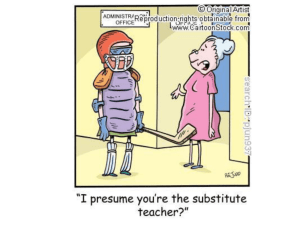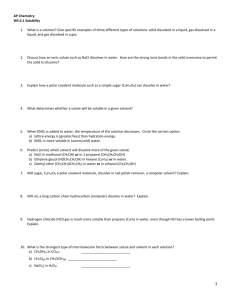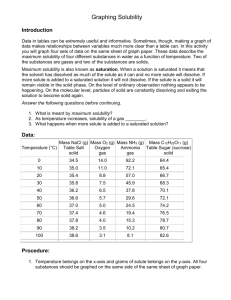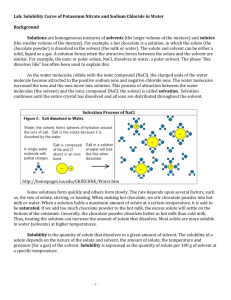Saturated solutions and solubility
advertisement
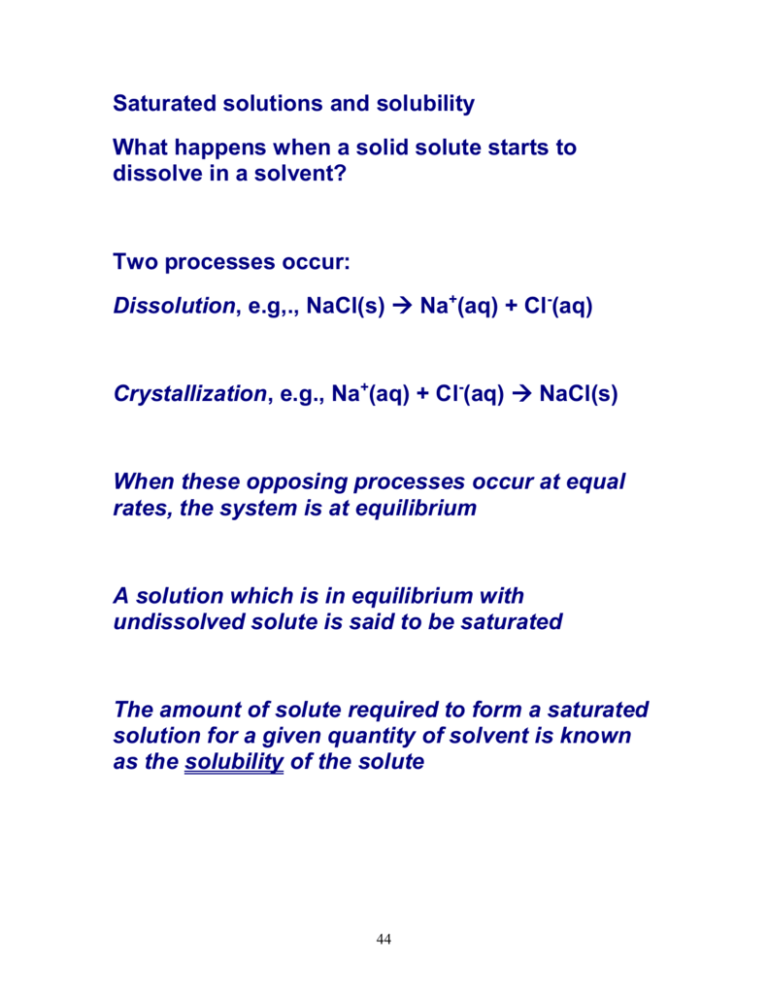
Saturated solutions and solubility What happens when a solid solute starts to dissolve in a solvent? Two processes occur: Dissolution, e.g,., NaCl(s) Na+(aq) + Cl-(aq) Crystallization, e.g., Na+(aq) + Cl-(aq) NaCl(s) When these opposing processes occur at equal rates, the system is at equilibrium A solution which is in equilibrium with undissolved solute is said to be saturated The amount of solute required to form a saturated solution for a given quantity of solvent is known as the solubility of the solute 44 E.g., the solubility of NaCl in water at 0oC is 35.7 g/100 mL of water What is the solubility of NaCl in 200 mL water at 0 C? o We can also have unsaturated & supersaturated solutions What factors determine the extent to which one substance dissolves in another? Factors affecting solubility Solvent-solute interactions Pressure Temperature 45 1. Solute - solvent interactions polar liquids tend to dissolve readily in polar solvents E.g., acetone is miscible in H2O; what types of interactions are possible? Remember: Like dissolves like E.g., which member of each of the following pairs is the more soluble in H2O? Why? CH3CH3 or CH3OH CCl4 or CaCl2 CH3CH2OH or CH3CH2CH2OH 46 2. Pressure effects Solubility of a gas in any solvent increases as the pressure of the gas over the solvent increases (why?) Relationship between gas pressure and solubility is expressed by Henry's Law, Cg = kPg Where Cg = solubility of gas in solution phase Pg = partial pressure of gas k = Henry's Law constant Notice that solubility is directly proportional to pressure! What are the implications of this?? 47 3. Temperature effects Solubility of gases decreases with increasing temperature (why?) Solubility of ionic compounds (e.g., CaCl2) increases with increasing temperature (Fig 13.7) Now: in order to discuss quantitative aspects of solutions (e.g., vapor pressure, osmotic pressure, etc.), we need to be able to specify the composition of a solution in terms of its solute concentration....... A detour is in order...... 48




